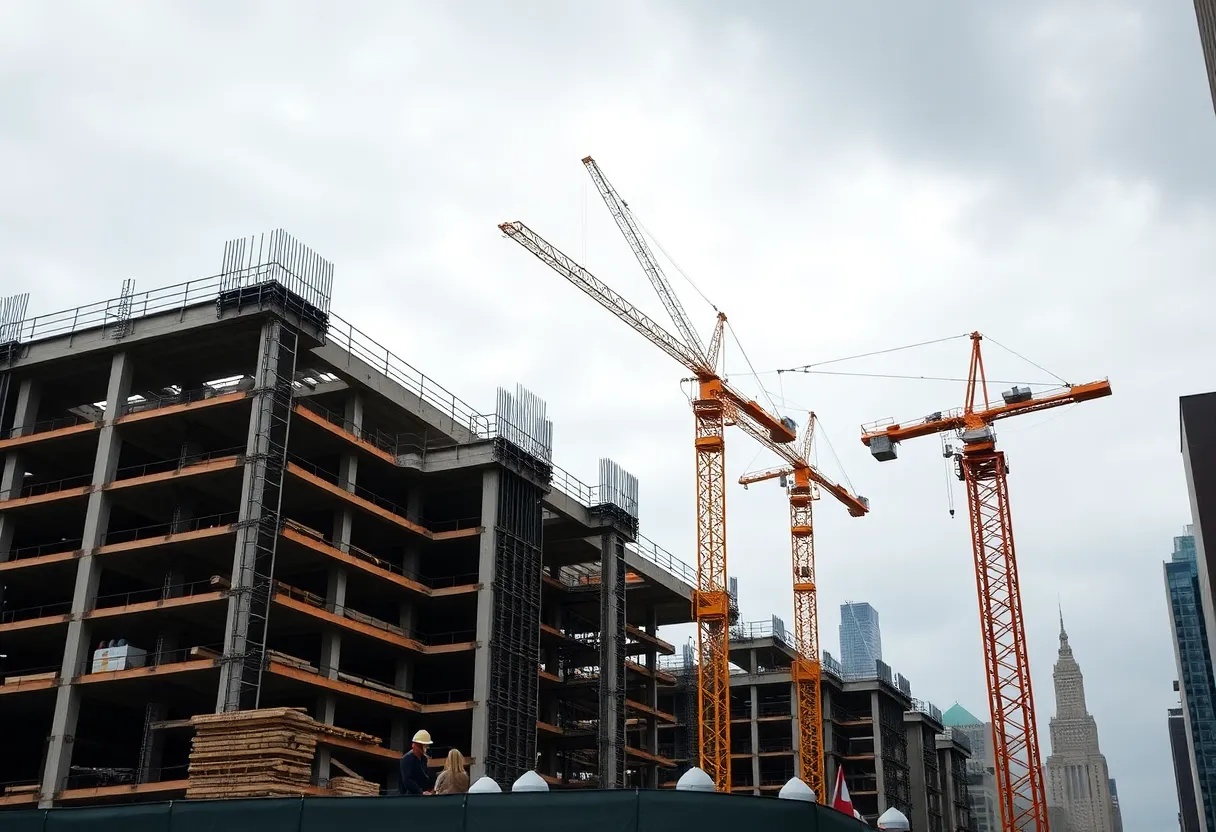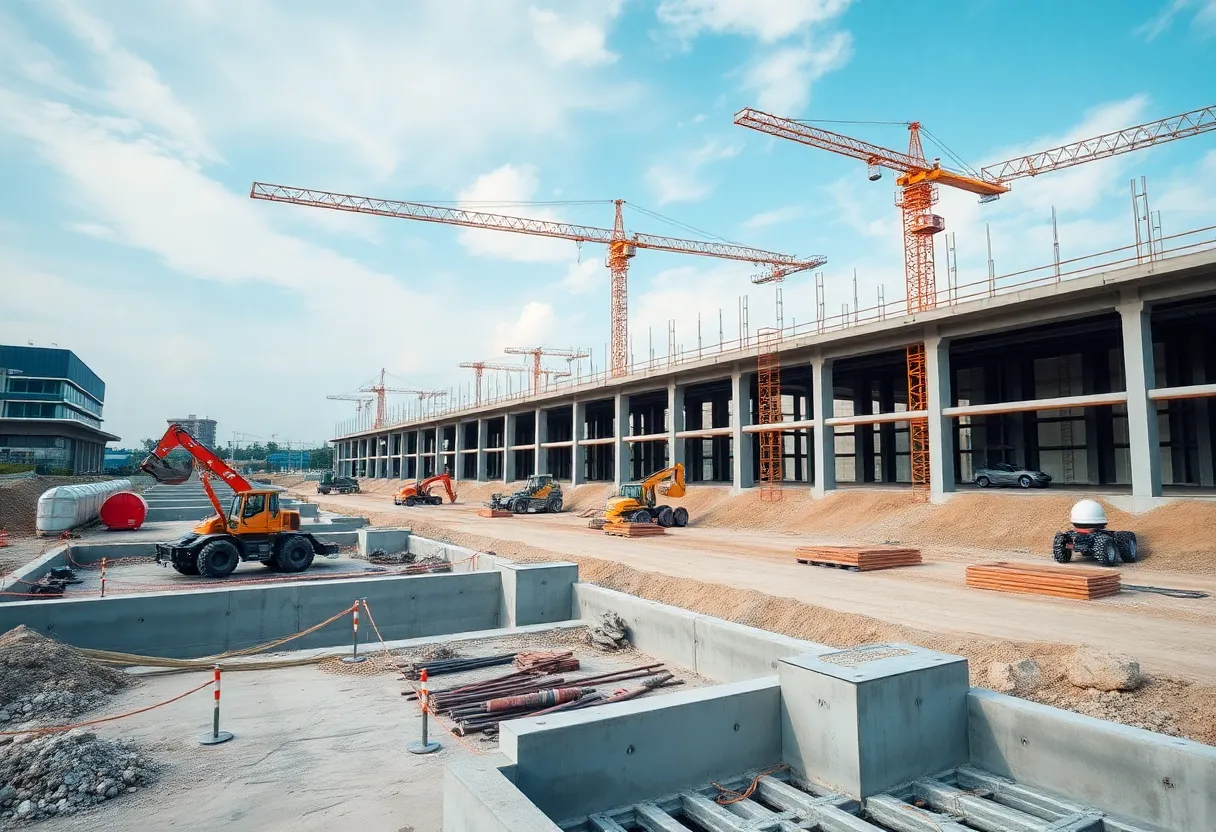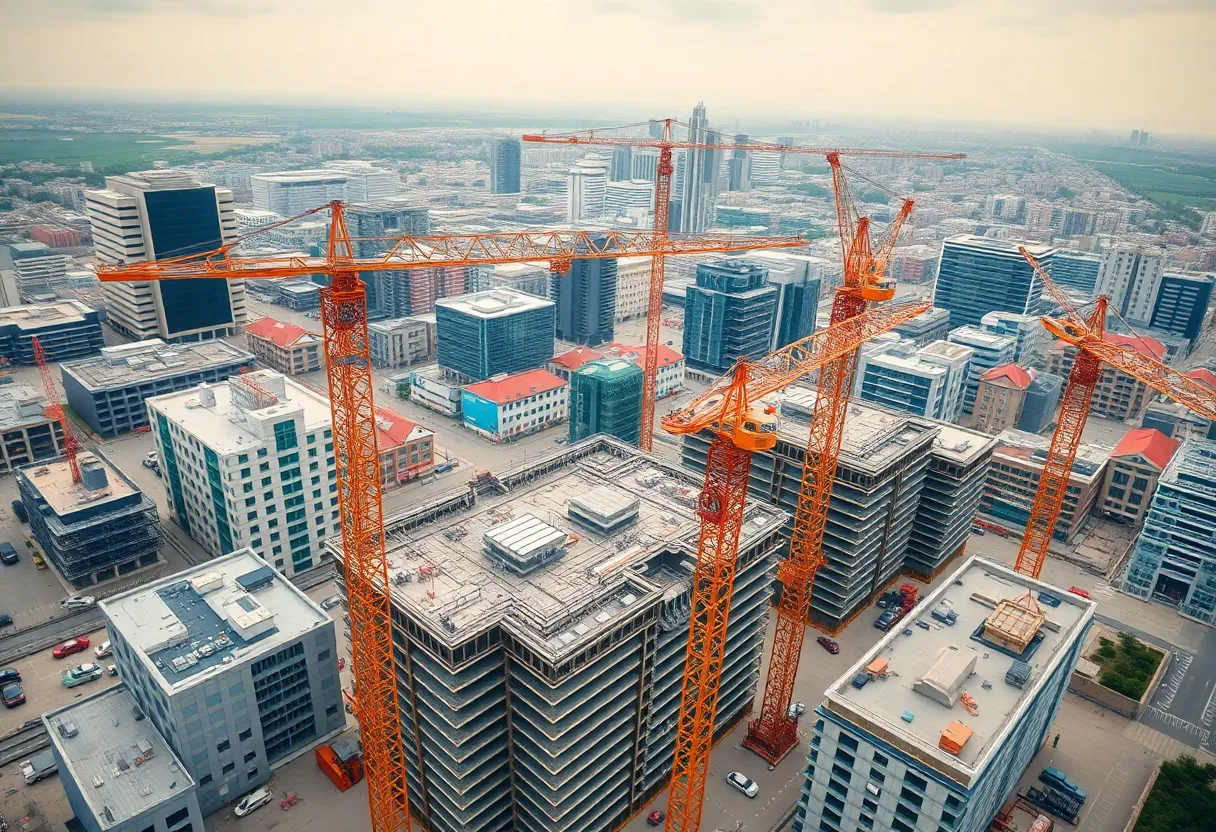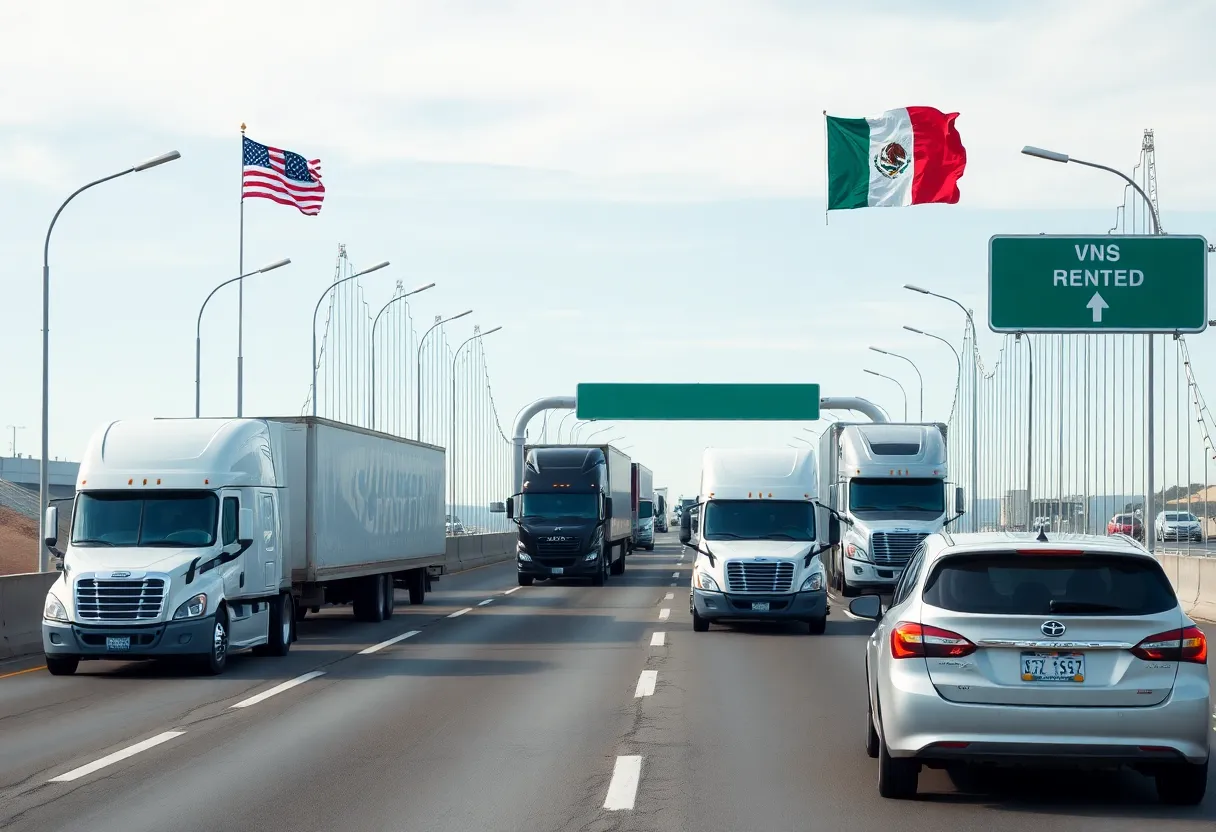News Summary
The construction industry in Chicago is experiencing a significant crisis due to rising tariffs and material costs, reshaping the environment for developers and contractors. With increased costs threatening housing affordability, many builders are scaling back projects. Tariffs on essential materials like steel and aluminum are driving up construction expenses, leading to reduced housing availability, particularly for low-income families. Experts warn that without intervention, the construction landscape may continue to worsen, affecting the accessibility of new homes for potential buyers across the nation.
Chicago Construction Industry Faces Financial Strain Amid Rising Costs
The construction industry in Chicago is grappling with a significant crisis due to rising tariffs and escalating material costs. These challenges are reshaping the landscape for contractors and developers, particularly those targeting the middle market. With tariffs imposed by the federal government impacting vital construction materials, rising costs threaten to further complicate the already precarious housing affordability situation in the U.S.
Impact of Tariffs on Construction Costs
As tariffs imposed on steel and aluminum imports increase by 25%, construction costs are projected to surge, affecting both residential and commercial projects. Currently, around one-third of U.S. lumber is sourced from foreign countries, with approximately 70% coming from Canada. This heavy dependence on external resources means that any tariff imposition significantly raises the overall cost of building new homes.
Consequences for Developers and Homebuyers
Developers like Mavrek in Chicago have already begun scaling back ambitious projects in response to these economic uncertainties. A proposed 210-unit mixed-use development was reduced to just 46 units, illustrating a growing hesitancy among builders. As inflation and high-interest rates also drive down demand for new homes in regions like Southern California, the economic landscape continues to shift.
Experts suggest that prolonged tariffs could add substantial costs to new home construction. Estimates indicate that framing a new home could become $10,000 to $15,000 more expensive due to these tariffs, placing even more pressure on potential homebuyers.
Economic Ripple Effects
The implications of these tariffs extend far beyond material costs. With the rising prices of essential materials, overall project viability is at risk. Some contractors are now finding it challenging to secure financing as they face increased economic instability. The resulting hesitation may hinder the availability of new homes, thereby exacerbating existing housing shortages—especially for low-income families.
Increased material prices function as a tax on builders and consumers alike, complicating affordability even further. As the National Association of Home Builders has pointed out, this creates additional challenges for potential homebuyers already facing a housing affordability crisis.
Consultation and Planning Strategies
To navigate these turbulent waters, middle-market contractors must work with informed lenders to make sense of the ongoing crisis. Although macroeconomic challenges persist, capital remains accessible for those who strategize effectively. Managing budgets and understanding the shifting price landscape of building materials is essential for sustaining construction endeavors.
Interest Rates Compound Challenges
Furthermore, the current high-interest-rate environment adds an extra layer of complexity for developers. With rising mortgage rates stifling affordability, the repercussions of tariffs will linger across multiple facets of the housing market. Economists emphasize that rising construction costs will inevitably be passed down to consumers, leading to inflated housing prices and higher rents.
Future Outlook and Adjustments
As the Trump administration temporarily pauses the implementation of the 25% tariffs on Canadian and Mexican goods, uncertainty looms regarding future policy decisions. Many developers are now rethinking their investment strategies, given the unpredictability created by ongoing tariff debates and volatility in costs.
The negative implications of these tariffs could result in a significant shortfall of affordable housing options across the nation. Without interventions and a stabilization in material costs, the struggle for adequate housing in Chicago and beyond may reach critical levels, particularly impacting low-income communities.
Conclusion
In summary, the Chicago construction industry is facing a multifaceted crisis fueled by rising tariffs and material costs. As contractors and developers navigate these challenges, the broad impacts on housing affordability continue to raise concerns. Without effective strategies and supportive policies, the future of construction projects might hold more uncertainty and barriers for potential homebuyers.
Deeper Dive: News & Info About This Topic
Additional Resources
- Crain’s Chicago Business: Contractors Can Stay Resilient Amid Tariffs and Rising Costs
- ABC7 Chicago: Experts Say Tariffs Expected To Have Big Impact on Cost of New Home Construction
- Newsweek: Chicago Development Shrinks Under Trump Tariffs
- Chicago Agent Magazine: What Tariffs Mean for Homebuilding Economy
- Google Search: Impact of Tariffs on Housing Market
Author: Construction FL News
The FLORIDA STAFF WRITER represents the experienced team at constructionflnews.com, your go-to source for actionable local news and information in Florida and beyond. Specializing in "news you can use," we cover essential topics like product reviews for personal and business needs, local business directories, politics, real estate trends, neighborhood insights, and state news affecting the area—with deep expertise drawn from years of dedicated reporting and strong community input, including local press releases and business updates. We deliver top reporting on high-value events such as the Florida Build Expo, major infrastructure projects, and advancements in construction technology showcases. Our coverage extends to key organizations like the Associated Builders and Contractors of Florida and the Florida Home Builders Association, plus leading businesses in construction and legal services that power the local economy such as CMiC Global and Shutts & Bowen LLP. As part of the broader network, including constructioncanews.com, constructionnynews.com, and constructiontxnews.com, we provide comprehensive, credible insights into the dynamic construction landscape across multiple states.





